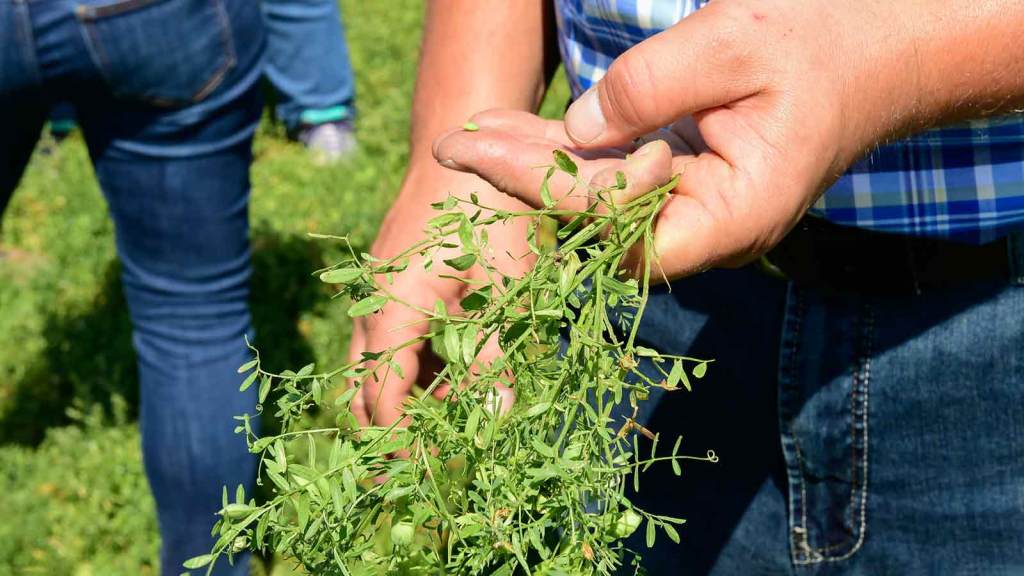In Canada, lentils are planted in early May. The plants grow approximately 12 to 24 inches tall, with the seeds being produced in pods attached to the plant. There are between one to three lentils per pod. The lentils are then harvested in their dry form typically in mid-August. The common practice in Canada is to seed the crop directly into the stubble of the previous crop. By doing that, we’re always maintaining a protective cover over the land to protect the topsoil.

Lentils and all pulses (beans, chickpeas, dried peas) are a key crop in lowering the environmental footprint of food production, food consumption, and are an ingredient for a sustainable diet. Lentils are able to fix nitrogen which means they form a relationship with bacteria in the soil that then enables them to draw nitrogen out of the atmosphere and put it into the soil, both for the use of that plant that’s growing and also leaving nitrogen in the soil for subsequent crops. Crops need nitrogen to grow. So, having lentils in our crop rotation lowers the overall greenhouse gas imprint of the whole farming system. Lentils actually have a negative carbon footprint because they sink more carbon into the soil than is emitted.

Want to learn more? Corey and his son, Aidan are lentil, canola, wheat and barley farmers in northwestern Saskatchewan. Click below to learn more.


 Learn How To Sprout Lentils
Learn How To Sprout Lentils